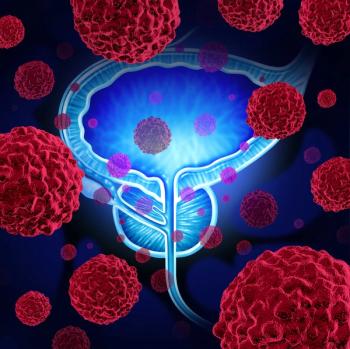
Ruxolitinib Cream Appears Effective Vs Placebo in Cutaneous GVHD

A phase 2 trial found that ruxolitinib cream significantly improved body surface area compared with vehicle cream in patients with cutaneous graft-vs-host disease.
Ruxolitinib cream (Opzelura) was determined to be safe and efficacious in a small cohort of patients with cutaneous graft-vs-host disease (GVHD) compared with placebo, according to results from a phase 2 trial presented at the
On days 14 and 28, body surface area was significantly improved with ruxolitinib vs placebo. At day 14, the ruxolitinib side was down by 46% vs 28% with placebo (P = .002), and on day 28 it was down by 57% vs 28% (P = .003).
“Responders and nonresponders to ruxolitinib cream had primary pathway differences in IL-12 signaling, which should be further explored,” Alina Markova, MD, FAAD, director of Inpatient Consultative Dermatology, co-director of Adult and Pediatric Multidisciplinary Graft-Versus-Host Clinics, and clinical director of Dermatology Service at Memorial Sloan Kettering Cancer Center, said during the presentation.
This was a double-blind prospective trial that enrolled 24 patients. Patients were randomly assigned 1:1 to either arm 1, which received ruxolitinib cream twice a day on the right-hand side with vehicle cream on the left-hand side, or arm 2, which had ruxolitinib cream on the left-hand side and vehicle cream on the right-hand side. After treatment, patients were given the option to receive full body ruxolitinib cream.
The primary end point was the efficacy of ruxolitinib vs placebo at 28 days determined by body surface area. Exploratory end points included skin tape stripping and 3D photography.
Patients were eligible to receive treatment if they had a history of allogeneic stem cell transplant, were older than 12, and had 2% or more body surface area or histologically confirmed non-sclerotic or superficially sclerotic cutaneous chronic GVHD. Additionally, if patients had received prior systemic therapy for GVHD, it must have been stable within the past 4 weeks, and any concurrent therapies must have been discontinued by study day 0 to be eligible for the trial.
The median patient age was 47.5 years; 54% of patients were female, 58.3% were White, and 79.2% were non-Hispanic. A total of 67% of patients were diagnosed with acute leukemia. Of note, the median time from transplant to enrollment was 455 days.
The median time from GVHD diagnosis to enrollment was 132 days, with 58% of patients having classic GVHD and 42% having overlap disease. A majority of patients had 2 prior lines of therapy (42%). Most patients had nonsclerotic cutaneous GVHD (87%). Prior topical lines of therapy included corticosteroids (88%), calcineurin inhibitors (42%), and phototherapy (29%).
Investigators used the Global Assessment of Clinical Condition for the left-side body surface area. The scale was from 0 to 6, included a description of the target treated area of the left side, and the response. Based on the physician global assessment score, ruxolitinib cream produced a decrease of 62% vs 26% with placebo (P = .0004).
The Composite Assessment of Index Lesion Disease Severity (CAILS) was used to grade erythema, scaling, and pruritus. It was also analyzed to grade body surface area. Regarding CAILS, ruxolitinib cream had a decrease of 61% compared with 31% with placebo (P = .004).
A total of 29% of patients had treatment-emergent adverse effects. One patient had a grade 1 headache that may have been related to topical ruxolitinib. There was 1 instance of grade 1 eye irritation and 1 report of serious grade 5 central nervous system leukemia that were unlikely to be associated with treatment.
The exploratory analysis examined molecular expression profiles of lesional GVHD following treatment with ruxolitinib cream or placebo when assessed with the DermTech Smart Sticker. The sticker was used to collect 1.5 mg or more of stratum corneum tissue, which included lesional and non-lesional tissue samples. Additionally, it was used to collect genomic tissue from epidermal keratinocytes, T cells, dendritic cells, and melanocytes.
An additional analysis found 17 patients to be responders and 5 patients who were non-responders at day 28. Between groups, 288 genes were differentially expressed.
Whole 3D body imaging highlighted a significant reduction in body surface area percentage on the treated side compared with the untreated side (P = .003).
Reference
Markova A, Papadopoulos EB, Dusza S, et al. Phase 2 trial of ruxolitinib cream for chronic cutaneous GvHD. Transplantation and Cellular Therapy. 2024;30(2):S1. doi:10.1016/j.jtct.2023.12.019
Newsletter
Stay up to date on recent advances in the multidisciplinary approach to cancer.

























































































